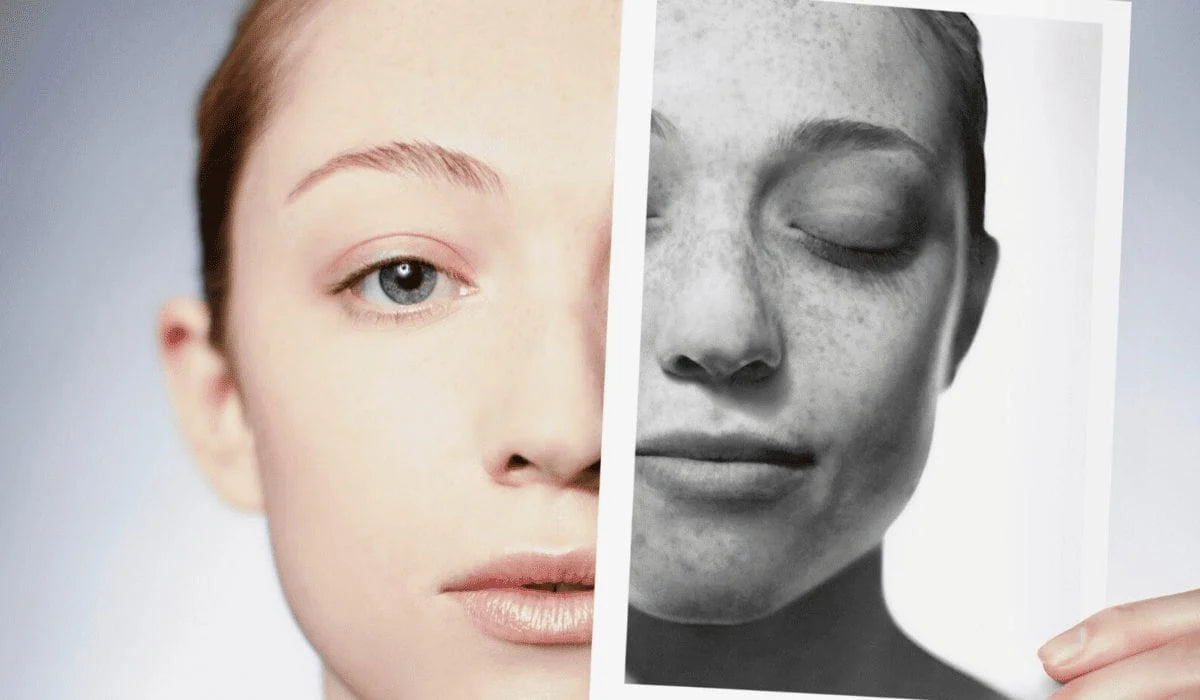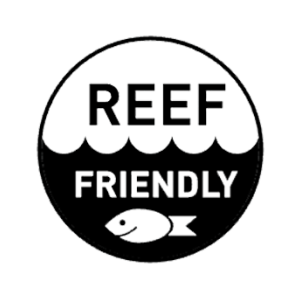With the “Great Indoor Migration” that we’re experiencing, the last thing you’re probably worried about is too much sun exposure. Sure, we all know it’s important to lather on the SPF when you’re spending hours outside, but who’s spending extended hours outside these days? Not many.

What you probably don’t realize is that you can damage your skin even from the comfort of your own homes. And we’re not talking about sitting in the window for too long — we’re talking about skin damage caused by screens.
Recent studies have shown that the blue light that emits from digital screens has a huge effect on our skin. Spending too much time in front of screens can have big consequences for our eyes, sleep patterns, and skin.
And we’re logging a lot of extra screen time these days – we’re working on screens, socializing on screens, watching entertainment on screens, and reading super informative blogs on screens (thanks for reading!).
May is Skin Cancer Awareness Month and it’s a cause we’re passionate about. As a plant-based skincare company, All Good was born out of a desire to use only the safest, non-toxic ingredients to protect our skin and the environment. All of our sunscreens are reef-friendly and zinc-based, meaning they do a stand-up job with broad spectrum protection AND they won’t cause damage to our bodies by absorbing through our endocrine system.
But we’ll come back to that later. For now, let’s talk about screens.
HOW SCREENS AFFECT YOUR SKIN
According to researchers at Unilever Skincare Research, spending 4 regular workdays in front of a screen is the equivalent of 20 minutes in the afternoon sun. YIKES.
So let’s talk light. Light is made up of a lot of different types of rays. The sun is made up of about 50% visible light (the light we can see), 43% infrared light (the light we can feel) and about 7% ultraviolet light (or UV, which we can neither see nor feel).

What are ultraviolet rays – and what’s the difference between UVA and UVB rays?
Ultraviolet light is broken into two categories – UVA and UVB rays. UVA rays are the most common (there are about 500x more UVA rays than UVB rays in sunlight) and are associated with the deep penetration into skin. UVA is responsible for long-term skin damage that causes aging and wrinkles. UVB rays are a shorter frequency wave and stay closer to the surface of your skin. They are responsible for those lobster-red sunburns and skin cancer.
What is blue light made of?
Blue light is part of the visible light spectrum and is also known as high-energy visible light, or HEV. The sun emits much bigger quantities of HEV, or blue light, than our devices, but prolonged exposure to screens starts to shrink the gap.
In 2014, the journal Pigment Cell & Melanoma Research published a study that compared blue light exposed skin to UVB exposed skin. While the skin exposed to blue light showed no signs of cancer growth, it did show “significantly more pronounced hyperpigmentation lasting over 3 months.” In layman’s terms: skin damage.
Our skin is filled with naturally occurring vitamins and enzymes working to fight free radicals caused by sun damage and pollution. As we age or spend more time exposed to direct light in any form, our skin’s antioxidant defenses become overwhelmed and can lead to an imbalance of free radicals in our skin. Simply put: take care of your skin.
HOW SUNSCREENS AFFECT YOUR SKIN
Sunscreens are basically magical science shields. Generally, sunscreen is made up of ingredients that bond together to form a barrier on your skin that prevents ultraviolet rays from getting through your skin. That’s what broad-spectrum means: your skin is protected from UVA and UVB rays across the light spectrum.
What are non-toxic sunscreens?
Not all sunscreens are created equal – chemical sunscreens are made with chemicals (shocker) also called “UV absorbers” that are small enough to absorb into your skin. These synthetic sunscreens actually allow rays into your skin and then block them underneath the surface – we’re not really a fan of that tactic and we’re not a fan of toxic ingredients, either. For more on that, check out our list of “Awful Eight” ingredients to avoid.

Other mineral sunscreens (like ours), are made with a zinc-based formula that sits ON TOP of your skin to block the rays from ever penetrating your skin. We like to call it: “protection by reflection”. We use Non-nano Zinc oxide to offer broad-spectrum coverage without all the toxicity.
If you aren’t careful about reading labels, you might end up using sunscreens that can damage your skin and the environment by introducing synthetic toxins into the body. But if you look for non-toxic, mineral-based, broad-spectrum sunscreen then you should be just fine. Read instruction labels and reapply after getting wet since sunscreen can (and will) rub off in water over time.
TIPS FOR TAKING CARE OF YOUR SKIN
We aren’t doctors and we don’t pretend to be, but here are some general best practices on how to prevent sun damage.
Establish a Cadence
Daily routines are important – especially when it comes to wearing sunscreen. Even when your routine goes totally haywire, make a habit to put sunscreen on daily. Make it part of your morning routine so you’ve got coverage all day. Brush your teeth, wash your face, and slap on some Tinted Sun Butter – ours is made with zinc and iron oxides so it sits on top of your skin and blends into most skin tones (so you don’t get that white-nosed lifeguard look). Make a habit of wearing sunscreen every day, forever.
Don’t Forget the Lips
You know the band The Flaming Lips? Well, let’s keep that moniker for the band. Your lips are part of your epidermis, and this skin is actually thinner and more susceptible to sun damage than other parts of your skin. Our broad-spectrum SPF 15 Lip Balms are made with organic coconut oil and botanical oils, are super soft to glide on, and they taste delish (we don’t recommend you eat them, but we won’t stop you). If you’re really trying to get serious, our SPF 20 Lip Balms are made from the same stuff but with an extra touch of zinc for that extra sunblock protection. Keep a few of these sticks stashed all over.
Get Your Whole Body
And we mean ALL of it. Not to get too morbid, but skin cancer is an extra nasty cancer because of its propensity to metastasize, or spread. Your skin is technically one giant organ – the largest organ in the body – so skin cancer can spread silently and quickly to other parts of the organ. So wear sunscreen all over your body – on the tops of your feet, the bottoms of your arms, the tips of your ears, the backs of your knees, all the way to the top of your head. We like to use our SPF 30 Mineral Sunscreen Spray to make sure we get all the nooks and crannies.

Stay Moisturized
Say it with us: “Healthy, Hydrated, Happy.” That is your skin mantra. Whether it’s after the sun, after the shower, or when your hands are feeling extra dry from all that hand sanitizing, lather on the lotion. We like our All Good Body Lotion made from certified organic cocoa butter and soothing calendula. Keeping your skin hydrated can help prevent blisters and cracks from dryness or peeling (if you’ve ever had a sunburn that peeled, well then you get it), and it’s a great first defense against germs and infections. Get in the habit of lathering up before bed so your skin can soak in all the nutrients.
Sport a Hat
The safest way to protect against sun damage doesn’t have anything to do with sunscreen, if we’re being honest. Wearing a hat to shield your face and clothes to prevent the sun from reaching your skin is your best bet in avoiding all the woes that come with sun exposure. So rock your favorite trucker hat and rashguard if you’re having trouble finding a safe mineral sunscreen you love.
Avoid Sun Exposure During Peak Hours
A sure-fire way to surely-not-be-on-fire is to avoid sun exposure between peak hours: 10 AM and 2 PM. This is when the sun is at its prime and UV exposure is the most hazardous. It’s like learning to drive: 10 and 2 (or at least that’s what helps us remember… queue the flashbacks). If you must be outside during these hours, review tips 1-5!
To learn more about zinc sunscreens and our commitment to reef friendly practices, check out All Good Mineral Sunscreens. Screen up for the screens, and when you need a break, be sure to go outside for some good old fashioned Vitamin D – we’ll make sure you’re covered.






